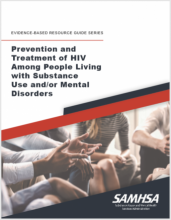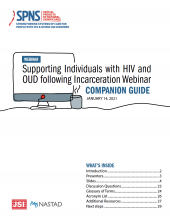
In recent years, the gap in the rate of opioid overdoses among Black and white Americans has narrowed significantly, with increases in Black mortality driven in part by the addition of synthetic opioids to other drugs.



In recent years, the gap in the rate of opioid overdoses among Black and white Americans has narrowed significantly, with increases in Black mortality driven in part by the addition of synthetic opioids to other drugs.
This technical package, a collaborative effort between CDC and NASTAD, provides a broad framework as well as evidence-informed strategies and approaches to support the planning, design, implementation, and sustainability of new and existing syringe services programs (SSPs).
Opioid agonist treatment (OAT) is the provision of medications (methadone and buprenorphine) that activate the opioid receptors to prevent withdrawal and reduce cravings for opioids.
This article describes how the HIV testing window period is a challenge related to prescribing PrEP for people who inject drugs, and discusses current approaches and how data are needed to help guide best practices.
This virtual session summary describes key takeaways from the August 2020 Let's Talk about SSPs as Essential Services conversation.
Developed as part of the Strengthening Systems of Care for People with HIV and Opioid Use Disorder project, this document contains brief descriptions of federal policy and systems changes due to coronavirus 2019 (COVID-19) that relate to the HIV and substance use systems of care, along w
This article includes a case report example from Boston Medical Center focused on prescribing buprenorphine via telehealth, an approach made possible by regulatory changes during the COVID-19 pandemic.
To address the infectious disease consequences of the opioid crisis in the U.S., a public workshop titled Integrating Infectious Disease Considerations with Response to the Opioid Epidemic was convened on March 12 and 13, 2018, by the National Academies of Sciences, Engineering, and Medicine.
This toolkit from the city of Boston, MA aims to facilitate the expansion of harm reduction services, and “help build a culture of harm reduction” in the city.